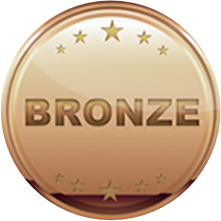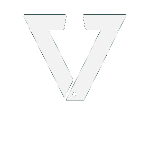SLSA Photography Policy
Policy Number 6.18 July 2008 Policy 6.18 Version 1, July 2008 1 of 8 1.1.
SLSQ Photography Policy 2022 update
Surf Life Saving Queensland has recently updated its Photography Policy. Previously members were directed to provide their consent to the use of their images in Life Saving publication areas such as newsletters, social media, and websites. This has been changed to a policy of members indicating NON-Consent for use of imagery to reduce the administrative requirements for clubs.
Coolum Beach SLSC Nippers is providing the SLSQ Photography Non-Consent Form to all nipper families to complete if they DO NOT WISH images of their nipper/s to be used within our club Team App groups, newsletter, website, social media, or annual report booklet.
All forms submitted will be kept on file by the club and a reference to the photography non-consent request may be noted on Surfguard.
Our official Club and Nipper Photographers will be made aware of these individuals and their indication of non-consent. Our administration team as well as those volunteers involved in publishing information and images to our club Team App groups, newsletter, website, social media, and annual report booklet will also receive this information.
Due to the fact that the admin team & some of these volunteers are not directly involved in Nipper activities, and therefore would not be able to identify a non-consent individual in a photo, we will request a photograph of the ‘photography non-consent nipper’ which would be kept privately on file for reference purposes.
How do I access the SLSQ Photography Non-Consent Form?
An editable PDF of the SLSQ Photography Non-Consent Form can be found here – slsqcm.entegyapp.com.au
Forms are to be completed and submitted to our Club Administrator at admin@coolumsurfclub.com.au.
1.1 Overview
Images of people and activities on Australian beaches, including surf lifesavers and their patrolling and competitive activities, are part of Australia’s cultural history and identity. It is in SLSA’s interest that this continues to be the case.
However, the increasing use of digital photo and video capture devices has led to concerns about when and where it is legal to take photos, and the role of SLSA members. This policy outlines the legal status of photography and videography, the circumstances under which photography may be restricted or not permitted, and provides guidelines for SLSA members when carrying out their duties.
1.2 SLSA’s role
Amongst its constitutional objects SLSA seeks to:
- ensure the maintenance and enhancement of SLSA and Surf Life Saving, its standards, quality and reputation for the benefit of the members and Surf Life Saving
- at all times act in the interests of the members and Surf Life Saving
- formulate or adopt and implement appropriate policies, including in relation to sexual harassment, equal opportunity, equity, drugs in sport, health, safety, junior and senior programs, infectious diseases and such other matters as arise from time to time as issues to be addressed in Surf Life Saving
- have regard to the public interest in its operations
- promote the health and safety of members and all other users of the aquatic environment.
SLSA considers that in order to meet these objects a policy is required regarding the clarification of the legal issues surrounding photography of persons at patrolled beaches and the immediate vicinity of patrolled beaches. SLSA is also currently responsible for a number of major surf sports carnivals, including the Australian Surf Life Saving Championships, while Surf Life Saving state centres, branches, and clubs also are responsible for many other events. These events, important and established parts of Australian culture, also present a variety of issues for organisers when considering photography – see section 3.
SLSA therefore considers it has an interest in articulating this policy for the following reasons:
- the growth of photographic and digital technology
- protection of SLSA members, particularly children
- protection of SLSA official and accredited photographers;
- clarifying the status of amateur and professional photographers in public places for SLSA members; and
- providing general information for spectators and other members of the public.
2. Photography in public places, such as the beach
2.1 The law
In Australia, generally speaking, there is no law restricting photography of people (including children) in public spaces as long as the images are not considered as:
- indecent (such as “up skirt” or “downblouse” photographs taken covertly in change rooms, toilets or other invasions of privacy) • being used for voyeurism or made for the purpose of observing and visually recording the other person’s genital or anal region
- protected by a court order (e.g. child custody or witness protection)
- defamatory
- for commercial purposes (person’s likeness is used to entice people to buy or it appears they are endorsing a product). This may require a Model Release/Consent Form to be signed – see Appendix A.
Consensual photos of a child (including one’s own child) also contravene criminal laws and censorship laws if the child is photographed in a provocative or sexual manner.
Where an event is held on private property, such as a surf life saving club, other privately owned land, a school or council owned facilities (but not, for example, a council road or park), the owners of private property or venues are able to restrict or ban photography (e.g. some council owned facilities will not allow mobile phones or cameras in change rooms or toilets). There is nothing, however, to prevent a person from photographing outside the property boundary unless it is taken for indecent or improper purposes, as listed above.
2.2 Guidelines for SLSA members
There are obvious public policy reasons for criminalising the type of behaviour referred to above. What is more problematic is trying to distinguish between photographs taken for an innocuous purpose, and photography which might be considered by the subject(s) ‘unwarranted or obtrusive’.
As noted above, photographs or videos of people in a public place may be taken without permission for a variety of innocuous reasons: parents taking photographs of their children in a group, amateur or professional photographers shooting a crowd scene, or tourists photographing a packed beach.
Some people may consider photography or videos of themselves or others on a beach as ‘unwarranted or obtrusive’ however there is no generally recognised right to privacy in these situations. Common sense and courtesy should apply in these situations. If you do not wish to be photographed or videoed, you should approach the photographer and make it clear that you do not wish to be photographed. SLSA members are not entitled or empowered to confiscate, or attempt to confiscate a person’s camera.
If an SLSA member (including a patrolling member) is aware or is made aware of any person who appears to be taking photographs or video of competitors or members (e.g. Nippers), which might be considered ‘unwarranted or obtrusive’, that member should approach the person to enquire what they are doing and why they are taking the photographs or film of SLSA members or competitors. Remember however that it is not illegal to take photographs in a public place, nor is consent required and SLSA members should at all times behave courteously in these situations.
If the SLSA member has reason to believe that a photographer is taking inappropriate images (see 2.1 above) he or she should seek to notify police or other relevant security (for example council inspectors or rangers). Members should record the incident and take reasonable steps to remember and record the person’s attire and appearance. Also any other identifiable characteristic (for example, car registration should be recorded if possible in the circumstances).
At all times SLSA members should act calmly and reasonably in approaching any suspicious person. As noted above, SLSA members are not entitled or empowered to confiscate, or attempt to confiscate a person’s camera.
3. Photography at official SLSA surf sports events
As noted above, SLSA is currently responsible for a number of major surf sports carnivals, including the Australian Surf Life Saving Championships, the Australian IRB Championships, the Australian Pool Rescue Championships, the Kellogg’s Nutri-Grain Ironman Series and the Coolangatta Gold. In these situations, and by agreement with local authorities, SLSA generally has control of certain sections of the beach for the duration of the event. This section of the policy applies to official SLSA events and does not necessarily apply to other surf carnivals. Surf Life Saving state centres, branches and clubs are encouraged to adopt the following procedures for their own events. Photographers should check with the relevant event organisers to determine what (if any) policies are in place in these situations. This can normally be done by approaching a member of the organising committee on the day of the event.
3.1 Official accreditation to SLSA surf sports events
From time to time, SLSA will appoint an official photographer to provide photographic services at SLSA events. All other photographers seeking access to SLSA events must be officially accredited. This requires the submission of a media accreditation form (see sample at appendix C), which is available on request in advance of each event. Such accreditation may require the photographer to provide proof of any relevant ‘working with children’ accreditation applicable in that particular state.
Due to logistical and other considerations, accreditation will generally not be granted to ‘club, branch or state photographers’ (photographers representing surf life saving clubs, branches or state centres) to SLSA events.
Accreditation is granted on the express condition that any photograph/film/imagery taken of competitors during or in connection with any of these events may only be used for editorial and non-advertising purposes. Any commercial reproduction of photographs (including onselling of images or forwarding to external organisations) must receive prior written approval by SLSA. The accreditation passes are non-transferable.
An accreditation fee may apply, and, if so, shall be paid prior to the issue of the accreditation.
Only SLSA accredited photographers are allowed onto any “controlled” competition areas at any SLSA Championship. Any other photographers can and should be asked to leave. If a photographer cannot produce their accreditation or they do not leave the controlled area they should be escorted from the relevant area by security. The police may also be called. Nonaccredited photographers are able to take photographs from all publicly accessible areas, for example, grandstands, footpaths or boardwalks.
See appendix C for sample accreditation form for SLSA surf sports events – other Surf Life Saving state centres, branches and clubs may have their own accreditation form and interested photographers are advised to check with the relevant organisation.
4. Protection of SLSA imagery
4.1. Use of red and yellow imagery for promotional purposes
Restrictions on the use of the Intellectual Property owned by SLSA and, in particular, the red and yellow imagery associated with surf lifesaving flags, caps, uniforms and equipment against ambush marketing and unauthorised use, both within surf lifesaving and by external parties for commercial gain, are set out in SLSA Policy 6.1 Intellectual Property.
As noted in that policy: “No Intellectual Property shall be used to sell, promote, endorse or approve any product or service without prior written authorisation from SLSA.”
4.2 Use of images of SLSA members for promotional purposes
From time to time, SLSA, its state centres, branches or clubs carry out photography of SLSA members for promotional purposes in accordance with Policy 6.1 Intellectual Property (see above). In all such situations, wherever an individual’s image is to be used, consent must be obtained [see appendix A for sample consent form]. Consent forms should be kept for as long as the image is displayed.
In some instances, for example, major surf sports events, it is not practical to obtain consent in all situations, in which case, either a disclaimer [see appendix B] should be displayed in prominent positions around the site, or the disclaimer should be part of the event entry criteria.
From time to time, SLSA, its state centres, branches or clubs pass on these images to third parties (sponsors, government departments etc) for promotional purposes. SLSA, its state centres, branches or clubs shall only pass on these images where consent has been obtained. These images shall not be used to sell, promote, endorse or approve any product or service without prior written authorisation from SLSA.
4.3 Copyright of photographic images
Copyright protects a range of materials, including photographs. A photograph is protected by copyright automatically from the moment it is taken. For photographs, unless there is an agreement to the contrary, the general rule is that the photographer is the first owner of copyright. There are, however, a number of exceptions to this general rule:
• Photographs taken in the course of employment • Commissioned photographs
Of most relevance to SLSA, its state centres, branches and clubs are the exceptions in relation to commissioned photographs. Specific provisions set out the general rules on ownership of copyright where a person who is not the photographer’s employer (a client) pays a photographer to take a photograph.
- For photographs taken before 1 May 1969, the person who paid for them to be taken owns the copyright, unless the photographer and client agreed otherwise.
- For photographs taken on or after 1 May 1969 and before 30 July 1998, the first owner of copyright in a commissioned photograph is the commissioning client, unless the photographer and client agreed otherwise.
- For photographs taken on or after 30 July 1998, the general rule on ownership depends on the purpose for which the photographs were taken:
- o if the photographs were taken for “private or domestic purposes” (such as family portraits, or wedding photographs), the first owner of copyright in them is the client, unless the photographer and client agree otherwise; however
- o if they were taken for any other purpose (e.g. commercial shots), the photographer will be the first owner of copyright, unless the photographer and client agree otherwise.
Information for this section is taken from Information Sheet G11 Photographers and copyright, January 2006, Australian Copyright Council.
4.4 Displaying images of children
From time to time, SLSA, its state centres, branches or clubs, seek to surf lifesaving activities in magazines, website etc. The Australian Sports Commission has produced guidelines in these instances – see http://www.ausport.gov.au/ethics/information_sheets/IS_acquiring_images.asp.
The ASC advises that if an organisation is acquiring an image of a child for display:
- Consider using models or illustrations for promotional / advertising purposes.
- Obtain permission from the child’s parent/guardian prior to taking the images of a child or young person.
- Ensure that all concerned are aware of the way in which the image is to be used and how long the image will be displayed.
- If an image is used avoid naming the child. If this is not possible avoid using both a first name and surname.
- Avoid displaying personal information such as residential address, email address or telephone numbers if images are being posted on websites or distributed in publications.
- Do not display information about hobbies, likes/dislikes, school, etc as this information has the potential to be used as grooming tools by paedophiles or other persons.
- Only use appropriate images of the child, relevant to the sport or activity, and ensure that the athlete/child is suitably clothed. Images of athletes participating in sports or activities that involve minimal clothing (e.g. swimming and gymnastics) or unusual body positions/poses could potentially be misused. The age of the child is another factor to consider when deciding if the image is appropriate.
- Reduce the ability for direct copying of pictures from a website to another source (i.e. disable the ‘right mouse click’ function).
- Clearly outline in a written contract to photographers who are contracted or paid to take photos, who will retain the images taken, include arrangements made for negatives, digital file and proofs and outline any restrictions for use and sale.
- Provide details of who to contact and what to do if concerns or complaints of inappropriate image use are raised.
5. Conclusion
The above policy guidelines are provided in the interest of balancing the needs of legitimate photographers with the wellbeing of SLSA members. The rapid advances in digital camera, mobile phone and internet technologies referred to earlier means that attitudes to what is appropriate and what is inappropriate photography may also change. SLSA will endeavour to ensure these guidelines are updated from time to time to take into account these changes. Surf Life Saving Australia July 2008

